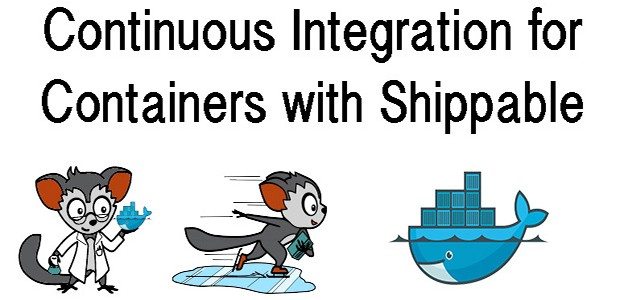Everything about DevOps revolves around streamlining systems and processes. As organizations embrace DevOps tools and principles, though, and as DevOps itself evolves and matures there is always a new line in the sand–a new bottleneck to contend with. Those challenges drive innovation and result in new tools and platforms to address them–like Shippable.
I wrote a post about what Shippable is doing to help organizations manage container app development and continuous integration:
Containers have evolved quickly from a nascent niche concept to a mainstream technology. The popularity of containers has sparked its own cottage industry—the existence of this website included—dedicated to fostering and facilitating the use of containers to simplify and automate app development. Shippable is an example of a company devoted to containers.
Containers remove platform and language barriers, but the containerized apps still need to be developed and maintained. Shippable exists to help developers ship quality code faster. The Shippable website explains, “Our continuous integration/continuous delivery (CI/CD) platform leverages Docker to help you ship better code, faster than ever before. We automate your workflow between the time code is committed to the time it lights up in production.”
I had a chance to speak with Shippable co-founder and CEO Avi Cavale recently. He paints an ambitious vision for the future of container technology. Cavale pointed out that containers seems to be following a similar trajectory of adoption as virtualization did a decade or so ago. At first it is used strictly in lab environments to streamline auditing and testing. Eventually it gathers mainstream steam and IT admins start to ask themselves why they’re not embracing this technology in production environments.
According to Cavale organizations will move toward a micro-services based architecture, and containers will be the fuel that drives it. As companies strive to innovate faster and faster the sheer weight of the code will slow them down. It makes sense to break development down to its smallest possible chunks—like containers.
No matter how small you break down the development, though, there is still a lifecycle to contend with. There is the act of developing the code, the process of testing and refining and choosing when or if to deploy the code, and finally the act of deploying it. Shippable provides a platform for managing the container application lifecycle from beginning to end—focusing primarily on the middle chunk.
Check out the full story at ContainerJournal: Shippable brings continuous integration to containers.
- AI Voice Clones and Mobile Phishing: The Cyber Threats You’re Not Ready For - July 11, 2025
- Rethinking Cloud Security for the Evolving Threat Landscape - July 11, 2025
- Why Data Security Is the Real AI Risk - June 30, 2025



